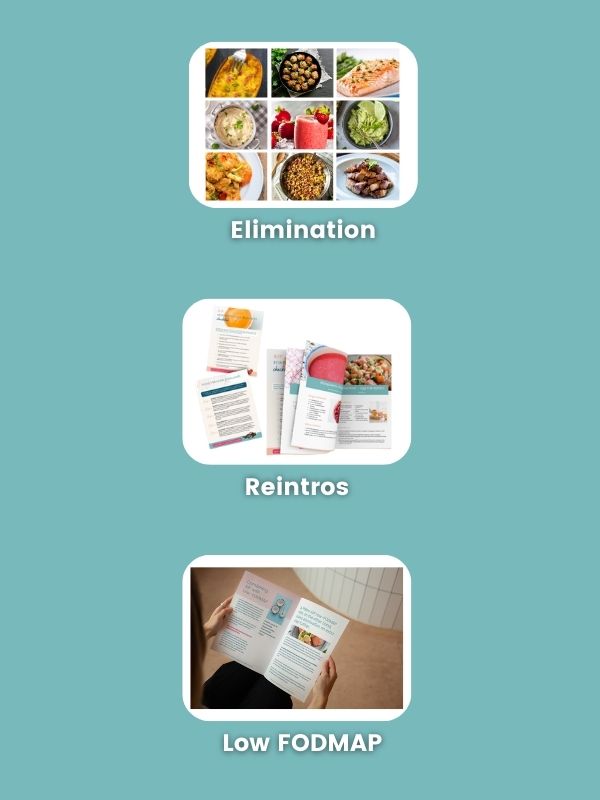How Diversifying Fibers for a Happy Microbiome can help to repopulate the gut, plus some recipe ideas to help you!
How much do you know about your microbiome? It’s the collection of bacteria and various other organisms that live in your gut. We’re still learning exactly what they do, but the importance of the human microbiome has become more and more apparent in recent years.
It has become so important; the gut microbiome is often referred to as the second brain. The more we learn, the more connections we are finding between the gut and the brain. For example, did you know that there is a link between depression and a lack of certain bacteria in the gut?(1) The same goes for migraines.(2)
In other words, making sure those little critters in your gut are healthy and well-fed will go a long way toward helping your entire body stay healthy. And one of the best things you can do for your microbiome is to eat a varied diet full of different fibers.
Let’s talk about how to do that!
This post contains affiliate links and I will be compensated if you make a purchase after clicking on my links.



Your Microbiome Loves a Varied Diet Full of Different Fibers
There are all sorts of different types of bacteria and other microorganisms that live in our gut. Each family or each type thrives on a different type of nutrients, especially various forms of fiber and starches.
The idea is to encourage a diverse biome by eating lots of different types of food, particularly those rich in fiber. While you are on the elimination phase of the Paleo Autoimmune Protocol, that means fruits in moderation, and a balance of both low carb and starchy compliant vegetables.
A fun way to accomplish Diversifying Fibers for a Happy Microbiome is by challenging yourself to eat thirty or more different types of AIP-compliant plants each week. It sounds like a lot at first glance, but when you realize that each different type of lettuce, each herb, each type of fruit and each spice counts, it’s not that hard to get to thirty and beyond.
Let’s take a look at what that might look like below!

How to “aim for 30”
For breakfast, you can have things like:
- This N’oatmeal – a swap for oatmeal which uses veggies instead of grains
- My Pumpkin Breakfast Bake – rich in different prebiotic fibers and full of aromatic flavors
- This AIP Breakfast Porridge – made from squash instead of grains
- My Lovebird Cheerio Granola – comforting, familiar and easy to bake
- Flavorful Smoothies & Smoothie Bowls – a great way to get in a bounty of different fruits and veggies
- These 5 Quick & Easy AIP Breakfasts are also big morning meal winners for busy people!
For lunch, give these ideas a try:
Try one of these crisp Paleo AIP Salads and eat the rainbow!
My Paleo AIP Cheeseburger 2-Ways are always a homerun for a hearty lunch, and you can add whatever toppings or sides you wish to bump up the veggie factor.
If you are simply in a snacking mood around noon, give these Homemade Plantain Chips a try and dip them in some mashed avocado with lime juice, smashed garlic, minced onion, and chopped cilantro.
And don’t forget about soup! It’s a great source of all sorts of different fibers. Check out this roundup here for 6 amazing AIP soups.
Did we hit thirty different plants yet?
If not, at dinner time mix up your starches by using beets, sweet potatoes, winter squashes, various types of AIP compliant baking flours, and things like unsulphured dried fruit.
Roast a few of your favorite veggies, and let’s not forget about fried or mashed plantain, taro, and turnips! Try different types of leafy greens and cruciferous veggies, too.
You’ll also appreciate this AIP by Season cookbook because it shows you how to cook so many different AIP compliant plants (and grass-fed or wild-caught meats) all in one resource!

Diversifying Fibers for a Happy Microbiome Is Easier Than We Might Think
By getting creative, you can get close to hitting your thirty different plants in a single meal by making a big pot of soup or AIP chili full of different veggies, herbs, and AIP spices.
How many different plants have you had so far this week? Let me know in the comments!


















